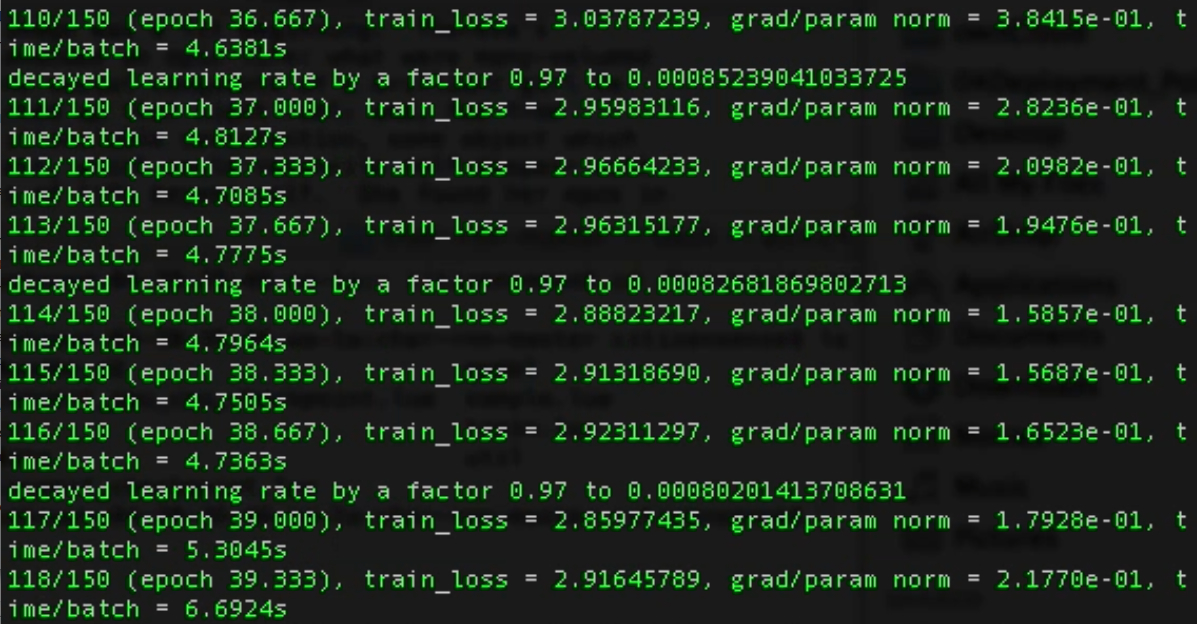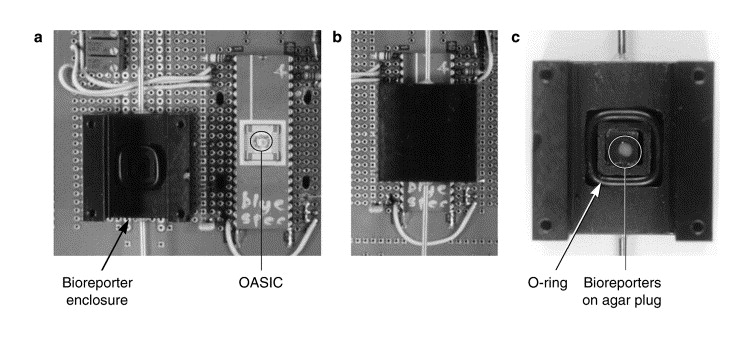Exe0.2 Helen Pritchard
//Image: Terminal Screen Shot from Critter Compiler, contaminated novel writer, Helen Pritchard 2016.
//Image: Whole-cell biosensor for petrochemical detection, Simpson et al 1998.
This is the scene, a computer travels back in time. A dolphin falls in love with a computer. A computer falls in love with a dolphin. A computer falls in love with a computer. Two Earth dolphins are launched as Cosmodolphins in the cyberspace or dream-machine of the computer and wake up in the future as a feminist geographer, engaging us in a felt sense of causality.
A transgenic fish falls in love with a computer. A computer falls in love with a transgenic fish. A feminist geographer falls in love with the asthmatic luminous woman of Pirano whose breasts emit a blue glow. A transgenic fish from the past goes into suspended animation and winds up either becoming Donna Haraway or taking Donna Haraway’s place at a critical juncture.
In 1997 Oak Ridge National Laboratory announced the development of a living sensor, the “Critters on a Chip”, a tiny light-sensitive computer chip coated with bioluminescent bacteria, placed on a standard integrated circuit. In the presence of targeted substances including petrochemical pollutants and explosives, the bacteria emitted a visible blue-green light. Small, inexpensive and fast, critter chips imagined an affective scene in which microbes could be used to monitor remediation and bioaccumulation at sites contaminated by petrochemicals.
Today the speculative scenes of the bio-economy are enduring, take for instance the bioluminescent-bioreporter integrated circuits that monitor toulene levels or the fluorescent microbes extracting precious metals, for computers, from mine waste. Critter Chips emerge from the entangled scenes of extraction, pollution, computation and labor. Scenes, I argue, in which computational execution is increasingly instantiated (in both a metaphysical and computational sense) by the extension of computation into the bodies of nonhuman organisms– what I refer to as toxic execution.
Whilst advanced capitalism and petrochemical production are often characterized by the destruction and erasure of life, this presentation engages with the partial lives/half living that emerge in scenes of petrochemical toxicity and toxic execution. How then might we start somewhere more queer, to imagine critter chips in anti-capitalist forms – even it is just an experiment in speculation? Perhaps by “refiguring the notion of life critically through a queer engagement with critical theory” (Weinstein 2015). By focusing on critters, I do not wish to reinstate the categories of the nonhuman organism or execution as fixed. Instead, I want to develop a fuller understanding of the capitalist practices of computing and the ways in which it extends its reach into life.
What 21st-century critter chips demonstrate is that our entangled "becoming with" is taking place for an advanced capitalism that reduces bodies through affect to their informational substrate, where data accumulation and bioaccumulation are conflated. If as Gabrys notes "Waste reveals the economies of value within digital technology” (Gabrys 2011, 17), toxic execution highlights the reclaiming of waste as producing value in computation. Toxic execution (both applied and speculative) extends the horizon of calculation to include protein production and nonhuman variation as affective variables for computer processing. It is through this extension that computing becomes constituted in new spatial and material ways, and capitalism as a neo colonial force invades new scenes. However what seems important to retain is, a fine sensitivity to the intersectional sites in which computation and petrochemicals involves themselves in very different lived (or deaths) experiences.
Computation in its entanglements with toxicity mobilizes different temporalities than other toxic scenes. For example, it differs from the toxic scenes, in which become life becomes “unproductive” as described by Mel Chen (2012). Instead critter chips as toxic subjects are not rendered as unproductive or dead immediately, but are held in a state of enduring productivity, by harnessing the affects of toxins as something quantifiable by computation, they become productive, (more productive than a query run across a central processing unit) if only for a moment in a short-lived life. Computation in this scene brings back into circulation all perceived wastes, which include toxic subjects, through their enrollment into productivity.
Together with my research on toxic execution I will also show a prototype of the ‘Critter Compiler’. In this fabulation contaminated algae, grown by the heat of the CPU collaborate with neural networks to rewrite George Eliot’s novel Middlemarch.
References:
Bryld, M. a. (2000). Cosmodolphins: Feminist cultural studies of technology, animals and the sacred. Zed Books. Chen, M. (2012). Animacies: Biopolitics, racial mattering, and queer affect (Kindle Edition ed.). Duke University Press. Gabrys, J. (2011). Digital rubbish: A natural history of electronics. University of Michigan Press. Weinstein, J. (2015). Posthumously Queer. GLQ-A Journal of Lesbian and Gay Studies, 21(2-3), 236-238. Chicago

